ZZZ... ZZZ... huh!?! Wha!?! Oh, it's you... so sleepy, read this excellent article about Dwight Gooden and Darryl Strawberry by Marty Noble. S'good.
It wasn't a new phenomenon that developed during Spring Training of 1984. The New York baseball audience had witnessed -- and been amused by -- a similar scenario that had played out three years earlier when Tim Leary was the talk of the Mets camp and the most impressive young pitcher in Florida. The Yankees suddenly discovered Gene Nelson to counterbalance Leary. The Mets would-be phenom turned 21 in March, 1981. Well, Nelson was merely 20 when, under orders from The Boss, the Yankees anointed him. That would show 'em.
And their manipulating did succeed, to a degree, even though Nelson made only a modest splash in 1981. Leary's shoulder betrayed him, and he left only shallow footprints before the Mets traded him four years later.
Delighted with that calculated response to the threat of the Mets, the Yankees implemented identical strategy in the spring of 1984, pulling Jose Rijo out of their navy blue caps after another Mets phenom had earned some heavy type on the back pages of the big city. Rijo was a talent, more legit than Nelson, as he proved in subsequent seasons with the Reds and A's. But he was no match for what the Mets would spring on the city and unsuspecting National League hitters in April. The Yankees had no counterbalance for Dwight Gooden.
They quickly learned they couldn't combat all he was -- young, innocent and immensely talented -- any more than the hitters could combat all he was on the mound -- dazzling and dominant ... deadly -- a 3-D pitcher if there ever was one.
George Steinbrenner always had an unnatural fear of the Mets. But even when Darryl Strawberry and Keith Hernandez came to Queens in 1983, the Yankees owner had no rational reason for his phobia. Gooden changed that, beginning in '84. His emergence energized the Mets and prompted the market to focus on Shea Stadium. The Mets mattered again. The Boss squirmed. And by the middle of the following season, Yankee Stadium stood in the shadow of Shea, a rare occurrence.
Steinbrenner knew he couldn't compete, couldn't buy what the Mets had developed. And developing it would require time and provide no guarantee, even if he had the raw materials at his disposal. Moreover, Strawberrys don't grow on trees.
The Yankees hardly disappeared, but the city embraced The New Kids on the Block. While Hernandez may have been the force that galvanized the Mets in the mid-80s, Gooden and Strawberry were the muscle in the takeover. Their power, their youth and that they were bred and not imported by the Mets, underscored the appeal that their many skills fostered.
No aspects of baseball have greater appeal than strikeouts by the dozen and long home runs. And Gooden and Strawberry respectively provided both.
Doctor K did for his letter what Bo Derek had done for No. 10. And Strawberry, while he didn't fulfill the 50-50 prophecy of then-general manager Joe McIlvaine, hit more home runs than any other Met. Their power pitching and power hitting, and the team's overall success, made the Mets the more dynamic team in town, even though the Yankees had Don Mattingly, Rickey Henderson and Dave Winfield in their daily lineup.
Steinbrenner's fears, seemingly misguided in March 1984, were realized by the summer of '85, when Gooden was in the midst of a season for the ages and Strawberry was courting a 30-30 season. The market became mostly the Mets domain, as it had been in 1969 and into the early Seventies, and as it might be before the bats and balls are put away this year. Shea became the place to be and be seen.
Those Mets teams had so many compelling attributes, so many textures -- the grit of the Partners in Grime, Lenny Dykstra and Wally Backman; the wholesomeness of Gary Carter and Mookie Wilson; Hernandez's sex appeal, on-field intensity and sage presence; Ron Darling's Ivy League image; Kevin Mitchell's cultivated thug image, and the intelligence of manager Davey Johnson.
All of that, though, was subordinate to what Doc and Darryl provided. New York is obsessed with the superlative -- good or bad -- tallest, swiftest, loudest, meanest, biggest, baddest, craziest. The city enjoyed the '62 Mets because they were the worst. Gooden and Strawberry played to that fetish.
The Doctor was the fastest and the youngest in 1984, when he was the National League Rookie of the Year. The following year, he was merely the best, winner of the pitcher's triple crown (24 victories, 268 strikeouts and a 1.53 ERA) and -- unanimously -- the National League Cy Young Award.
"The whole league wants to kick his butt," Cubs catcher Jody Davis said. "And we can't touch him."
For a brief period -- mid-summer '84 through the first week of the '86 season, a Gooden start at Shea on a Friday night was an event like no other. Beatles-esque, the differences being the average age, prevailing gender and octave range of the screaming patrons. The K Corner began on a Friday night at Shea. It is one of the Mets' lasting influences in the game.
Gooden's time at the top was that brief period. He was a shooting star. Its brevity troubled him, left him unfulfilled. As early as Spring Training 1988, when his 73-26 big league record still glittered, he confessed, "I miss being great."
Some surmised he eventually turned to cocaine to fill the void. But MLB surveillance determined he was using before May 1986.
Strawberry, Rookie of the Year in '83, didn't peak until 1987, his 30-30 year, and 1988. But even as a rookie, his home runs reached areas of and outside Shea that no other Mets home runs had. The scoreboard in right-center field flinched each time he swung. And though he wasn't widely regarded as a clutch performer, he hit two home runs against the Astros in the 1986 NLCS that saved the Mets. Though they constitute his finest hours with the Mets, and they happened in media the capital of the world, they have gone virtually unnoticed by game's historians. The Mets never would have won Games 3 and 5 if they hadn't first avoided losing them.
Strawberry's three-run home run in the sixth inning of Game 3, eclipsed by Dykstra's final-pitch home run, tied the score and awakened Shea. And it came against a left-handed pitcher.
More remarkable was the searing line drive he pulled barely fair and barely over the fence in the fifth inning of Game 5. Nolan Ryan had retired the first 13 Mets batters when Strawberry struck, crushing a fastball almost off his shoetops to tie the score. The Mets won in 10 innings.
"I've thrown that pitch, what, 2,000 times? I don't know," Ryan said that day. "No one's ever hit it that hard, that far in that direction. ... Today, his talent out-talented mine."
Dykstra put it more succintly. He called his running buddy "Strawesome."
And has Shea ever rocked as it did after Strawberry's home run provided the final run in Game 7 of the '86 World Series? That majestic home run traveled to Cooperstown and back before it landed. In those heady days, the Mets faithful were certain they'd travel to upstate New York some summer weekend before 2010 to witness the inductions of Doc and Darryl. But, of course, neither has been -- or will be -- enshrined.
Instead each has been imprisoned.
Their careers crashed as spectacularly as they had developed. Sports Illustrated identified them as "The Dead End Kids."
Gooden missed the parade that followed the '86 World Series, feeding speculation that had begun in May that he was troubled. And before he would pitch again, he would spend time in rehab for cocaine use.
Alcohol was Strawberry's drug at first. Teammates wondered if it was his back -- as he said it was -- or the bottle that prevented him from playing down the stretch in 1990, when the Mets' seven-season sequence of success was coming to an inglorious end. Strawberry was gone to the Dodgers before he played another game.
Shea always seemed to pardon Gooden. It didn't even hold him responsible for the 1988 playoff collapse against the Dodgers. He didn't lose the game in Game 4, he just lost the series when he surrendered a tying home run to Mike Scioscia in the ninth inning.
After he was suspended for cocaine use in 1994, Shea never saw Gooden again until 2000, when he beat the Mets while in the uniform of the Yankees.
The ballpark always treated Strawberry more harshly than it did Gooden. He never gave the ballpark a grand season comparable to what Gooden presented in 1985. No matter what Strawberry did, it left the ballpark dissatisfied, frustrated.
The most skilled position players don't dominate the generic game as the best pitchers do. Unfair as it was, Strawberry was asked to.
"They expected something from me every day," he said in May. "The game doesn't let you do that."
So he was seen as a flawed player, one who might miss the cutoff and strike out twice before hitting a three-run home run. His monogram is DES, for Darryl Eugene Strawberry. Shea sometimes wondered if the letters stood for double-edged sword. It cut him no slack until after he retired.
Now, back in the employ of the club that drafted him in 1980, he is warmly received, even beloved. Shea is satisfied he gave what he could. It has forgiven him for not achieving a 50-50 season and embraces him now as it did when he was a rookie, full of promise and already dealing with unrealistic expectations.
Strawberry has had his demons and his health issues. And he made significant contributions to the Yankees' World Series championship teams of 1996 and 1998. Shea has forgiven those crosstown indiscretions as well.
The ballpark probably would forgive Gooden too -- for his no-hitter, thrown in the Bronx, and other missteps that have tarnished his image and jeopardized his well-being. Shea is in a forgiving mood these days, witness the MVP chants for Carlos Delgado.
Gooden has been invited to celebrate Shea's final days, a final house call for the Doctor, you might say. The club isn't counting on his attendance or announcing when he might show up on the final weekend.
If Gooden shows, it should be on the Friday night.
Claudia Boulton
7 years ago


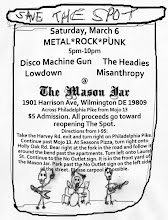

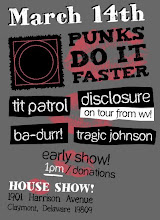
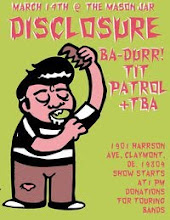
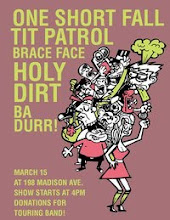




























































































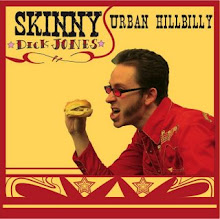




No comments:
Post a Comment